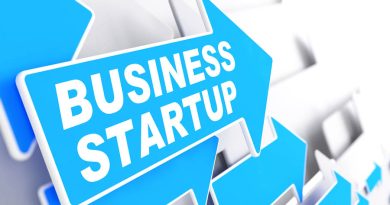Implementing Online Marketing Strategies for Your Small Business
Clearly, committing to a small business digital marketing strategy is a worthwhile step to reaching your business objectives. By understanding your goals and identifying your target audience, you can tailor strategies to yield results that improve your bottom line.
And the best part? Business owners can leverage many online marketing tools for free or at low cost.
Let’s look at four essential strategies using a hypothetical bakery business as an example.
1. Create a Content Marketing Strategy
Content can be a game changer, but not all content is created equally. Quality content offers genuine value to the readers, providing a connection with consumers.
This connection contributes to engagement, ultimately increasing lead generation, trust, and sales conversions.
Quality content begins with a solid content strategy.
Consider the following:
Define Your Objectives
Defining your objectives involves zeroing in on the intent of the content. Your goals will guide your content type choices.
Audience Preferences
Dive into your target audience’s content consumption habits. Emails, blogs, videos, podcasts, e-books, white papers, and infographics serve varied purposes and resonate differently.
Content Audit
If you already have content, review its performance. Content audits help in refining your approach and identifying content gaps.
Create a Content Calendar
Draft a content calendar, marking when and where you’ll publish. This consistency keeps your business visible.
Promotion
Ensure your content reaches a broader audience by sharing it across platforms, collaborations, or email newsletters.
Analyze and Iterate
Regularly monitor content performance. Adjust based on insights to ensure continuous alignment with business objectives.
Need help getting started? Semrush’s Keyword Magic Tool can help you generate topic ideas based on your main keywords.
You can use the Keyword Magic Tool for free. Simply type in a main keyword (or “seed” keyword) and hit search. You can review modified phrases, questions, and related keyword groups from there.
Creating Content: Do It Yourself or Hire Help?
Authoring content can be cost-effective but time-consuming, especially across different platforms. If your time as a small business owner is too limited for content creation, Semrush’s Appp Center offers various tools for small businesses to streamline production.
Here, you can choose from several applications to generate video, social media, or website content at scale for your business.
For example:
- ContentShake AI: Create unique, engaging content at scale with AI.
- Instant Video Creator: Automatically convert blogs into engaging videos in seconds.
- AI Writing Assistant: Create quality content with an AI-powered writing companion in seconds.
Ultimately, a successful content strategy involves understanding your audience, offering value, and balancing quality and cost. Once your content is ready, remember to advertise it across social media platforms.
Tracking the impact of your content marketing can be measured by new website traffic, content downloads, and engagement when sharing content on social media.
2. Leverage Social Media
Social media can promote your brand and offer the ideal forum for businesses to showcase products, engage with customers, and get instant feedback.
Choosing the right platform again depends on your audience. Researching where your target demographic spends most of their time is key.
Planning posts is another important step, and consistency in posting keeps your brand top-of-mind. Using scheduling tools can help maintain a regular posting rhythm, ensuring you never miss an engagement opportunity.
For $19.75/month, Semrush Social tools can manage, schedule, and analyze your social media on various platforms, allowing your business to gain traction.
And if you need the work done quickly, the AI Social Generator can help you generate captions, hashtags, and videos at scale for social media usage.
For our bakery, Instagram could be the answer. Regular posts of freshly baked goods, behind-the-scenes glimpses of the baking process, and interactive stories or polls about the next flavor can not only engage but also drive customers to the physical or online store.
As a KPI, the bakery could track its website traffic from social media or total engagement levels over time.
3. Optimize Your Website for Search Engines
SEO is about making your website more visible to search engines, helping drive traffic to your website naturally. And if your store has a physical location, local SEO is also pivotal in being found.
A great starting place with SEO is to set up your Google Analytics and Google Search Console accounts. These tools will help you gain a baseline for your current website traffic and visibility.
Another initial step is to identify terms your potential customers use by referencing keyword research. Incorporating these keywords into your content optimizes your website for user searches, allowing it to rank well on Google.
For our bakery, that might include trending dessert-related keywords like “bread bakery” or “gluten-free bakery near me.” The goal here is to choose keywords with traffic volume (volume) that are not highly competitive (keyword difficulty or KD%).
Next, ensure your site structure is intuitive. This makes it easier for search engines to crawl and index your content. Regular site audits can pinpoint issues like broken links or slow-loading pages, ensuring optimal user experience.
Link building is another integral component. Quality backlinks from reputable sites signal to search engines that your website is trustworthy and can lead to higher rankings on Google.
There are a few easy ways to grab backlink opportunities as a small business. These include:
- Linking from social media profiles: Link back to your website from your social media bios.
- Enlisting in local directories: List your business in local directories like Yellow Pages or Yelp.
- Local collaborations or guest posting: Partner with local businesses to advertise each other’s services.
Another way to build links is by monitoring mentions of your brand online. Apps like Media Monitoring can track these mentions and convert them into backlinks, further boosting your SEO.
To track your SEO success, you can measure KPIs like organic traffic and keyword rankings for the most important pages on your site.
With a solid SEO strategy, your online visibility will increase naturally. However, it’s worth considering paid advertising campaigns to supercharge your traffic and conversions more quickly.
4. Consider Paid Advertising
Pay-per-click (PPC) advertising is a method where businesses pay a fee each time their ad is clicked. But when is it ideal?
PPC is beneficial when you want quick results. While SEO is a long-term strategy, PPC can provide immediate traffic. It’s especially beneficial for seasonal promotions or new product launches. However, without a proper strategy, PPC can be costly without guaranteeing desired outcomes.
By setting clear objectives and budget constraints, businesses can ensure they’re not overspending for the traffic they receive.
When starting a PPC campaign, choose the right platform for your target audience. For our bakery, Google Ads targeting local baked goods enthusiasts could be impactful.
Ads Launch Assistant is a free app that can help launch campaigns in collaboration with Google Ads. This app combines Semrush keyword data with AI to assist in campaign creation and monitoring through AI-powered keyword and copy suggestions.
For a local bakery, targeting ads for “fresh pastries near me” or “best local bakery” can attract nearby customers searching for a satisfying treat.
After launching, use tracking tools to measure the campaign’s effectiveness, ensuring you get value for your investment. You can adjust the strategy as needed based on performance metrics.
KPIs for this strategy would include conversion rates, sign-ups and payments from ad traffic, and click-through rates.
Source: Semrush.com




